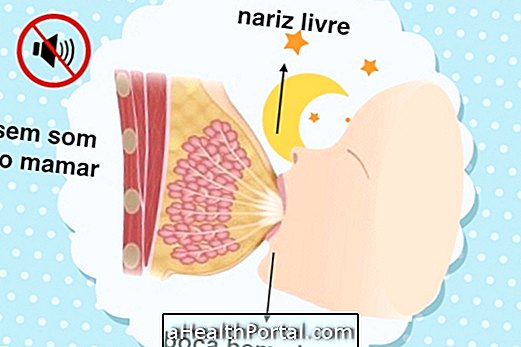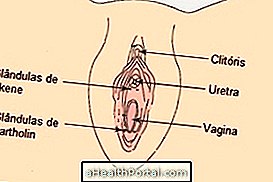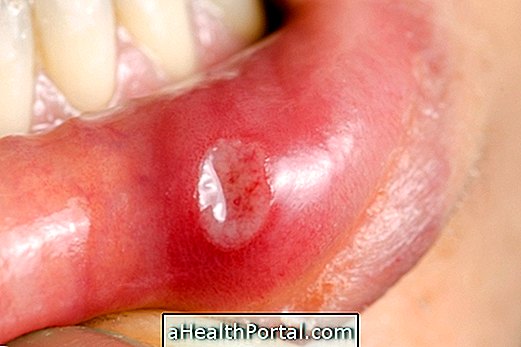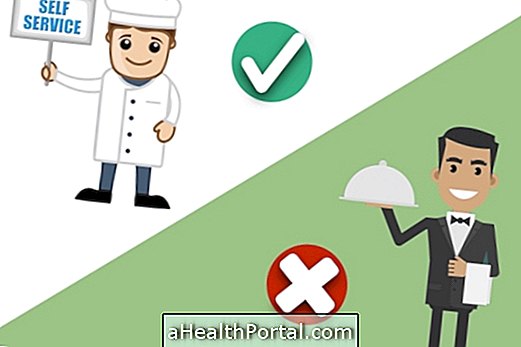The BLW method is a type of food introduction in which the baby begins to eat with the hands the foods cut into pieces, well cooked.
This method can be used to supplement the baby's feeding from the age of 6 months, when the baby is already sitting without support, can hold the food with his hands and take what he wants to his mouth, and show interest in what the parents are eating. Until the baby reaches these development milestones the method should not be adopted.
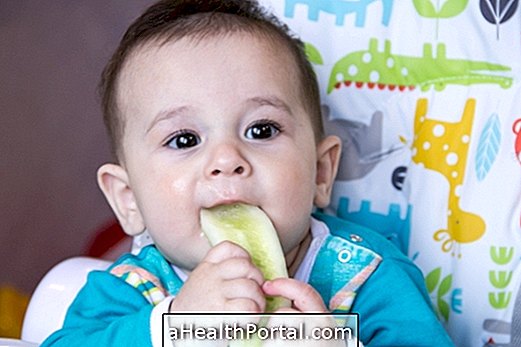
How to start the BLW method
To begin feeding with this method the baby must be 6 months old, which is when the Brazilian Society of Pediatricians indicates that breastfeeding no longer needs to be exclusive. In addition, he should already be able to sit by himself and hold the food with his hands and bring his mouth open, opening his hands.
From this stage the baby should sit at the table and dine together with the parents. It is necessary that the feeding of the baby is made only with healthy foods like fruits, vegetables and vegetables, being excluded of this phase the bread, biscuits and sweets.
A good way to start using the method is instead of putting the food on a plate, leave it on the tray that comes in the baby seats. Thus, food looks more colorful and draws more attention from the child.
What to give the baby to eat
Good examples of foods that baby can start to eat alone are:
- Carrot, broccoli, tomato, zucchini, chuchu, cabbage, potato, cucumber,
- Yam, squash, well-cooked maize cob, beetroot,
- Okra, pod, cauliflower, omelette with parsley,
- Banana (remove the peel almost halfway), grape sliced in half, sliced apple, cantaloupe,
- Macaroni bolt, boiled egg cut into 4, rice cookie with beans,
- Chicken breast cut into strips, grilled burger, meats in pieces can be used only to suck,
- Boiled fruit, shelled and chopped.
Hard foods should be cooked to facilitate chewing, and even if the baby does not have teeth, the gum is also able to crush enough so that it can swallow.
Chopping the vegetables on toothpicks is the best way to help the baby hold each piece to put in the mouth. If you are unsure if your baby can actually knead each food with the gum, parents can put food in their mouths and try to knead using only the tongue and the roof of their mouths.

Foods That Your Baby Should Not Eat
Based on this method, all food that can not be hand held should not be given to the baby, such as soup, puree, and baby food. To prepare food for baby cook only with water and a minimum amount of salt. As the baby becomes accustomed to eating, around 9 months, you can introduce seasonings, herbs and condiments to vary the flavor.
If the baby does not like a particular food initially, one should not insist on eating, because this can cause him to lose interest in food. The best strategy is to just try after some time, giving a small amount.
Olive oil and poop oil are welcome, but the cooking oil does not, so the baby should not eat anything fried, just grilled and cut into strips.
Sausage, sausage, sausage, hard candy, soft or sticky, as well as whipped soups and sweet potatoes are discouraged.
How much food should I give
The ideal amount is only 3 or 4 different foods at lunch and dinner. This is not to say that the baby will eat everything, for the experience of picking and putting in the mouth to feel the smell and the taste also count. It is normal to have dirt on the table because the baby is still learning and should not be punished for not eating everything or spreading food in his chair or table.
How To Know That Your Baby Has Eaten Enough
The baby will stop eating when he stops feeling hungry or loses his curiosity about the food in front of him. The best way to know if your baby is being well fed is to check if he is growing and getting enough weight at each pediatrician's appointment.
Every baby will still need to continue breastfeeding until at least 1 year of age, and much of the calories and vitamins they need will also come from breast milk. Giving the breast after the baby eat with your own hands is also a good way to ensure that he eats enough.

How to ensure your baby will not choke
So that the baby does not choke it must remain the whole time of the meal sitting at the table, having full control of what it picks up and puts in the mouth. According to the normal development of the child, the first one is able to suck, after biting and chewing, but only when she can sit alone, open and close the hand and bring something to the mouth to eat, it must be stimulated to eat in pieces.
If it has already developed in this way, there is little risk of choking, even because the baby will not be able to get very small foods like grains of rice, beans or peanuts, because for this movement it takes a lot more coordination, which tend to make the child choke. Large pieces that have not been properly crushed by the baby's gums can be removed from the throat through the natural reflex the baby has, but for it to work, the baby needs to be seated or standing.
So for baby safety he should never be left alone feeding himself, lying down, lying down or distracted while playing, walking or watching television. All baby attention should be focused on foods that he can hold with his hands to eat alone. In any case it is good for parents to know what to do if the baby chokes. Here we show the step by step of the Heimlich maneuver for babies.



